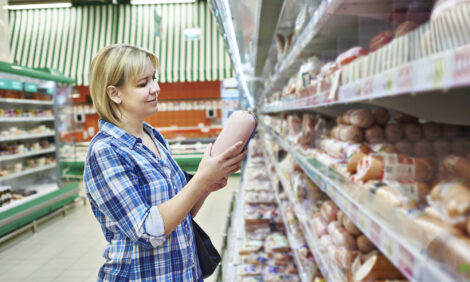



Shell Strength: strong from shelf to shelf
H&N International works with science photographer Stefan Diller for an up close view of an egg shell“Humans tend to underestimate or neglect what they cannot perceive. But invisible things can be of greatest meaning and determine whether you produce successfully or not,” explains Xabier Arbe.
To take an unprecedented look at shell strength, the perfect product packaging of quality eggs, H&N International turned to one of the worlds’ most renowned science photographers: Stefan Diller.
Small things have big impacts. Even more so when your business is genetics, and your craft is the careful observation and selection of invisible traits that will combine to yield a highly performing breed. As one of the worlds’ oldest genetic companies with its own breeding pools optimized for constant shell strength under various feeding and living conditions, H&N International knows all about excelling in areas mostly invisible to the human eye. Just like Stefan Diller, who has been working as Scanning Electron Microscope (SEM) photographer and filmmaker for more than 30 years.
Unlike conventional microscopes that work with light, SEMs use electron beams to scan surfaces. Since electrons travel on a shorter wavelength than visible light, high-end SEMs can visualize down to 0,5 Nanometers (diameter of two Carbon atoms), as opposed to the 200 nanometers of common light microscopes. Simply put, SEMs can show much smaller structures than light microscopes.
Meter |
m |
10 raised to the power of 0 |
= 10 dm |
Decimeter |
dm |
10 raised to the power of -1 |
= 10cm |
Centimeter |
cm |
10 raised to the power of –2 |
= 10 mm |
Millimeter |
mm |
10 raised to the power of -3 |
= 1000 μm |
Micrometer |
μm |
10 raised to the power of -6 |
= 1000 nm |
Nanometer |
nm |
10 raised to the power of -9 |
= 1000 pm |
From dust till mold
Stefan Diller finds his inspirations anywhere. For example, in the dusty contents of vacuum cleaner bags. In 2013 a selection of 12 SEM images featuring various every-day airborne particles and common air pollutants from dust to mold spores, pollen or even tiniest diesel soot were exhibited at the Brussels Green Week 2013 "Cleaner air for all" held from 4th to 7th June by the European Union.
Global press coverage was massive, and the SEM images of the “Visualizing the invisible” exhibition even ran briefly on a Jumbotron at the New York Times Square. Making it here resembled quite a “career” for everywhere-materials that had been sampled for the SEM shoots from household dust, car exhaust pipes and polluted air filter mesh.
There can be only one – the right moment of “crack”
Product packaging is almost as important as the product itself, and this is certainly true with eggs. There is only one right moment of “crack”, and that is when the end customer intends to use the egg. From layer bird to the various stations of logistic and value creation chains to market shelves and finally to the kitchen table, the eggshell must hold and preserve the contents.
Since any number of eggs is only as good as their shell strength and thus their saleability, H&N International selects and measures all their breeds for optimum shell strength under any condition.
“Getting some 500 eggs may sound great. If each egg is intact and saleable, that is!” says Xabier Arbe.
Getting many eggs that are unsaleable can be a living hell of wasted resources and money. Investing into birds, barns, type of feed and all other production related costs only pays off when the produced eggs are sellable.
Does your wallet “bleed” silently?
“One sellable egg is worth some four times the feed it took to produce it. It quadruples your stakes,” explains Dr. David Cavero. “A non-saleable egg is not only worth zero, but puts you into the red, since it presents a negative investment.”
Lesser amounts may seem neglectable, but they accumulate. That’s why making the math is so much more important in the layer business to not let margins melt away unnoticed.
Count your daily egg output and balance sellable versus unsaleable eggs. Or count all broken eggs. The latter may be harder to find, so you have more difficulty to realize when your real egg output is below your expectations.
“Good shell strength literally protects your wallet from constantly bleeding money. That’s exactly why H&N International selects all breeds for excellent shell strength,” explains Arbe.
The fine line between good and perfect
What separates a good shell strength from an excellent one is the fact that by inherent instinct a layer bird chooses to eat the exact amount of chalk it needs, out of any feed, to create a shell that’s hard enough and not just “a bit harder than needed.”
“H&N birds are truly sculpting artists. We select them for this instinctive feed intake that naturally also factors in shell strength. H&N birds know just how much to eat of any food to continuously create eggs with excellent shell strength each. Our birds can handle different feeds by adjusting their eating habits and stomach elasticity automatically, so farmers can switch back and forth between feeds of different quality without needing to worry for declining shell strength that would otherwise render their efforts unstable and unsaleable,” explains Dr. Cavero.
Not seeing is not knowing – but refusing to see is ignorance.
Crucial production factors such as shell strength and flexible feed intake have always been core criteria of H&N birds “because that is what we see our markets require to produce successfully and outperform others,” says Dr. Cavero. Yet shell strength and feed tolerance may sound new to the industry.
That is because many stakeholders have no interest in talking about them since their birds don’t have these characteristics. They profit by not investing into their own selections and get away with inflexible breeds or high amounts of unsaleable eggs, and their customers only realize these flaws after having purchased them, if ever. Egg producers pay the price without realizing.









